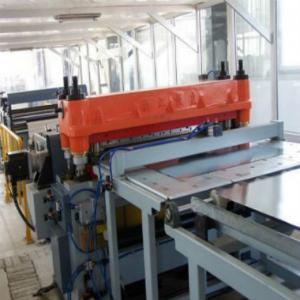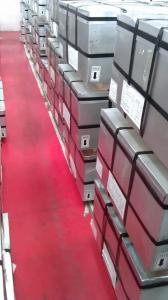Tinplate For Seafood Can-CHBB
- Loading Port:
- China Main Port
- Payment Terms:
- TT or L/C
- Min Order Qty:
- 20 Tons~ 25 Tons m.t.
- Supply Capability:
- 40000 MT Per Month m.t./month
OKorder Service Pledge
OKorder Financial Service
You Might Also Like
General information of Tinplate For Seafood Can
|
Steel Type |
MR |
|
Temper (BA&CA) |
T1~T5, DR8 |
|
Coating |
2.8~8.4g/m2 |
|
Thickness & Tolerance |
0.15~0.5mm (Tolerance:±0.01mm) |
|
Width & Tolerance |
600~1000 mm(Tolerance: +2/-0mm) |
|
I.D |
508 MM |
|
Coil Weight |
3~10 MT |
|
Passivation |
311 |
|
Oiling |
DOS |
|
Surface Finish |
Bright ,Stone ,Silver ,Matte |
|
Min Order |
25 Tons for 1 20 feet FCL |
|
Package |
Seaworthy Export Standard Wooden Pallet |
|
Standard Available |
GB/T2520-2000, JIS G3303, ASTM A623, BS EN10202 |
|
Lead Time |
35 days after receiving buyer's original L/C or Prepayment |
|
Special specifications are available on customers' requirements. | |
Technical data of Tinplate For Seafood Can
|
Chemical Composition(%) |
Mechanical Property |
|
C:0.02~0.05 |
Yield Strength: (Mpa):280~320 |
|
Si:0.01~0.03 |
TensileStrength: (Mpa):340~390 |
|
Mn:0.18~0.22 |
Elongation:20%~30% |
|
P:0.014~0.016 |
------------- |
|
S:0.006~0.009 |
Application of Tinplate For Seafood Can


Tinplate is widely used for making all types of containers such as artistic cans, tea cans, painting cans,
chemical package cans and metal printing etc. Its applications are not limited to containers; recently,
tinplate has also been used for making electrical machinery parts and many other products.
Equipment and Facility of Tinplate
Tin Coating Line of Tinplate

Cold Rolling Mill Batch Annealing Furnaces


Cutting Line Stock Area


Quantity Control System of Tinplate

- Q: What are the key properties of tinplate?
- The key properties of tinplate include its corrosion resistance, durability, malleability, and ability to be easily formed and shaped. Additionally, tinplate has excellent heat resistance, making it suitable for various applications in the packaging industry.
- Q: How does tinplate perform in microwave ovens?
- Tinplate is not suitable for use in microwave ovens as it can cause sparks and potentially damage the oven.
- Q: How does tinplate compare to plastic in terms of durability?
- Tinplate generally offers better durability compared to plastic. It is a sturdy material that can withstand external pressures and resist dents or breakage. Additionally, tinplate is less prone to cracking or warping over time, offering a longer lifespan for products made from it. On the other hand, plastic can be more prone to scratches, cracks, and degradation over time, making it less durable than tinplate.
- Q: What are the properties of tinplate?
- Tinplate is a type of steel that is coated with a thin layer of tin, which imparts several key properties. It is highly corrosion-resistant, making it suitable for packaging food and beverages. Tinplate also has excellent heat resistance, making it ideal for products that need to withstand high temperatures during processing or cooking. Additionally, it has good formability, allowing it to be easily shaped and molded into various sizes and designs.
- Q: What are the different thickness options for tinplate?
- The different thickness options for tinplate typically range from 0.13mm (0.005 inches) to 0.49mm (0.019 inches), depending on the specific requirements of the application.
- Q: What are the different ways to display tinplate containers?
- There are several ways to display tinplate containers. They can be showcased on shelves or in glass display cases, hung on hooks or racks, arranged in creative formations or patterns, or even used as decorative centerpieces. Additionally, they can be incorporated into themed displays or grouped together by size, shape, or design to create an eye-catching presentation.
- Q: What are the food safety regulations for tinplate packaging?
- The food safety regulations for tinplate packaging include ensuring that the tinplate used is food-grade and does not contain any toxic substances that could contaminate the food. The packaging should also be properly sterilized to prevent any bacterial growth. Additionally, tinplate packaging should be designed to prevent any leakage or contamination during storage and transportation.
- Q: What are the advantages of using tinplate for packaging?
- There are several advantages of using tinplate for packaging. Firstly, tinplate is highly durable and can withstand external impacts, protecting the contents of the package. Secondly, it is resistant to corrosion, ensuring the longevity of the packaging and preventing contamination of the product. Additionally, tinplate is lightweight and easy to handle, reducing transportation costs and making it convenient for consumers. Moreover, tinplate is environmentally friendly as it is 100% recyclable, promoting sustainability and reducing waste. Lastly, tinplate offers excellent printing capabilities, allowing for attractive designs and branding options, which can enhance product visibility and appeal.
- Q: Can tinplate be used for chemical storage containers?
- Yes, tinplate can be used for chemical storage containers. Tinplate is a type of steel coated with a thin layer of tin, which provides excellent corrosion resistance. This makes it suitable for storing various chemicals as it helps to prevent chemical reactions and preserve the integrity of the container.
- Q: What are the different testing methods for tinplate packaging?
- Some of the different testing methods for tinplate packaging include visual inspection, leak testing, drop testing, compression testing, and corrosion resistance testing.
1. Manufacturer Overview
| Location | Hebei,China |
| Year Established | 2009 |
| Annual Output Value | US$2.5 Million - US$5 Million |
| Main Markets | North America South America Eastern Europe Southeast Asia Africa Mid East Eastern Asia Western Europe Central America Northern Europe Southern Europe Domestic Market |
| Company Certifications | ISO9001:2000 |
2. Manufacturer Certificates
| a) Certification Name | |
| Range | |
| Reference | |
| Validity Period |
3. Manufacturer Capability
| a) Trade Capacity | |
| Nearest Port | TIANJIN |
| Export Percentage | 11% - 20% |
| No.of Employees in Trade Department | 6-10 People |
| Language Spoken: | English, Chinese |
| b) Factory Information | |
| Factory Size: | Above 100,000 square meters |
| No. of Production Lines | Above 10 |
| Contract Manufacturing | |
| Product Price Range | Average |
Send your message to us
Tinplate For Seafood Can-CHBB
- Loading Port:
- China Main Port
- Payment Terms:
- TT or L/C
- Min Order Qty:
- 20 Tons~ 25 Tons m.t.
- Supply Capability:
- 40000 MT Per Month m.t./month
OKorder Service Pledge
OKorder Financial Service
Similar products
Hot products
Hot Searches
Related keywords



























